Understanding Rwanda’s Development Model through Urban Transport Reform

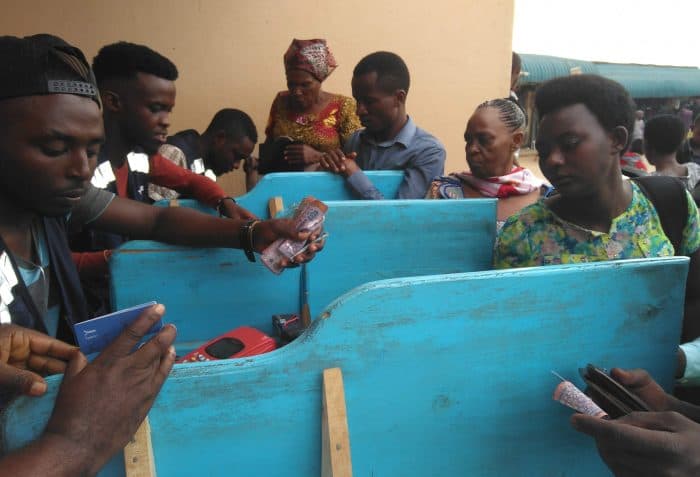

The meandering streets in the City of Kigali indulge you through multiple layers of a city carving its unique way out of a past, a history, metamorphosing towards an end state only conceived and understood by those who in the words of Thomas Sankara “dare to invent the future”. In the beginning, I am unaware of whether I am coming or going. The hills and valleys redefine and recreate themselves as one moves from one tip of the hill to another. Traversing the city feels like you are going around in circles, on the same path. The land of a thousand hills, its convoluting streets give you a feeling of being stationary. Something like vertigo. You are fixated by the city, it is the focal point on which Rwanda has dared to invent its future.
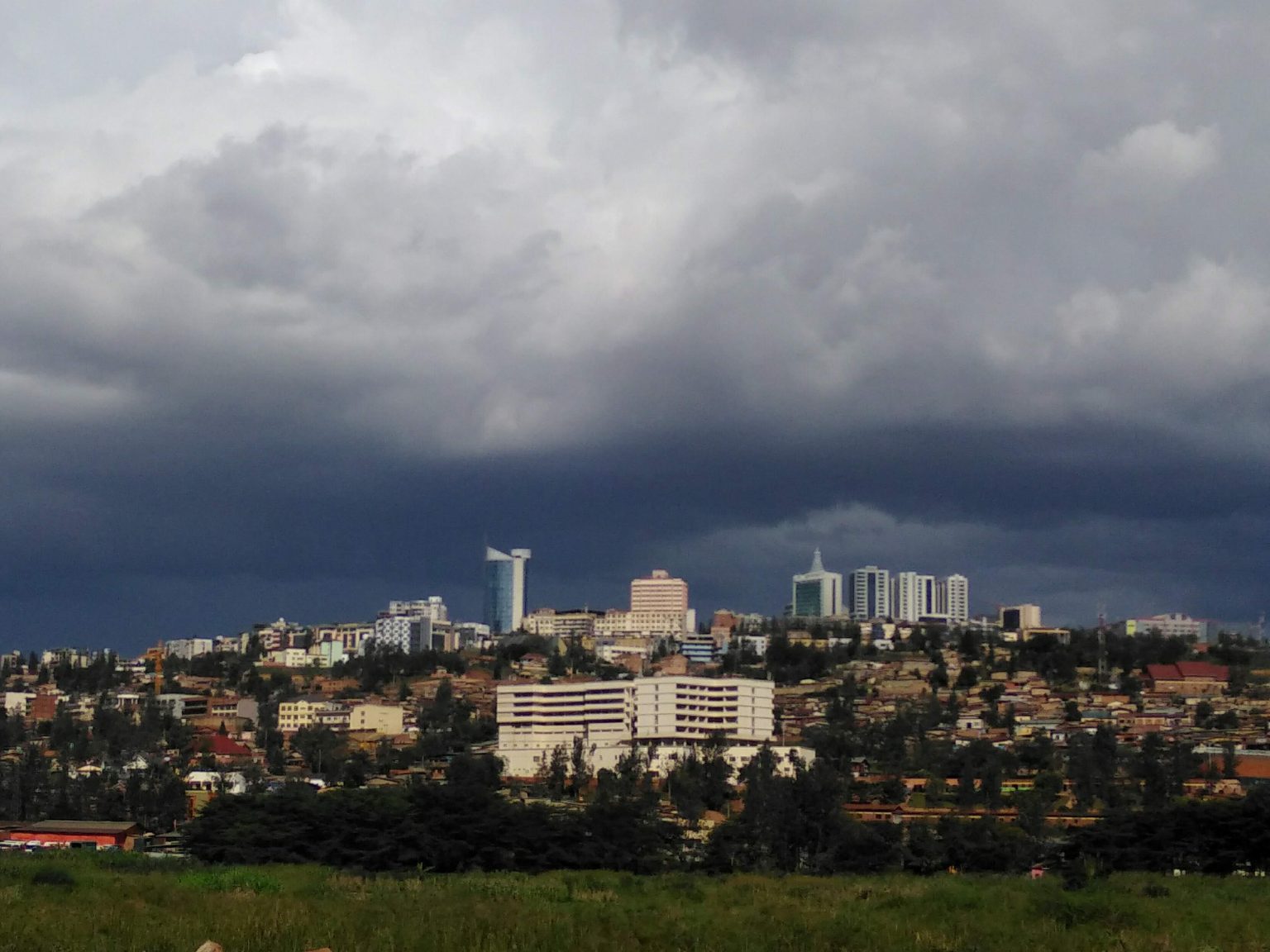 City of Kigali skyline just before the storms
City of Kigali skyline just before the storms
As I appreciate the complexities of the landscape, its people, its culture, I am challenged to imagine new ways of development, new ways of creating, alternate ways of shaping the future, reshaping the past, and its influence on us.
“There are events, moments in life that are like an encounter, a rendezvous, with the people. To understand them you have to go back a long way into the past, the background of each individual.” – Thomas Sankara
**Engaging with Rwanda’s developmental model through the lens of an urbanist **
I am no expert in development models, but I am sure an expert on how development models affect me and influence my experience with the people around me culturally, socially, and economically. I am writing this on the eve of Kwibuka27. Itself a very reflective period for Rwanda and the people that belong to it. It is a period that demands serious introspection and honest pragmatism is ensuring Rwanda, the country, its people, and the continent stay on course towards the desired end state of self-sufficiency and self-reliance. Kigali, known for its clean streets and organization presents itself with interesting stories of change and development.
Setting the agenda
Kigali in 2013 caught media attention when it announced its new urban transport planning model through the Kigali Master Plan (revised 2018) which combines strategies of modernization, reconciliation, and development. This planning model is guided by the national transport policy.
This city-wide transport master plan set the scene for reforming Kigali’s urban transport system. The master plan has the key goal of supporting an urban growth model that is public transport-oriented. The initial steps of reform were implemented under the first generation public transport system, whose primary objective was to reorganize the transport sector to implement a new licensing and contracting regime supported by modern technologies.
The first generation realized incredible progress with respect to urban public transport delivery. Existing operators with mostly minibus taxis were successfully organized into co-operatives and operating business units which have since been contracted to operate in 3 key zones in the city.
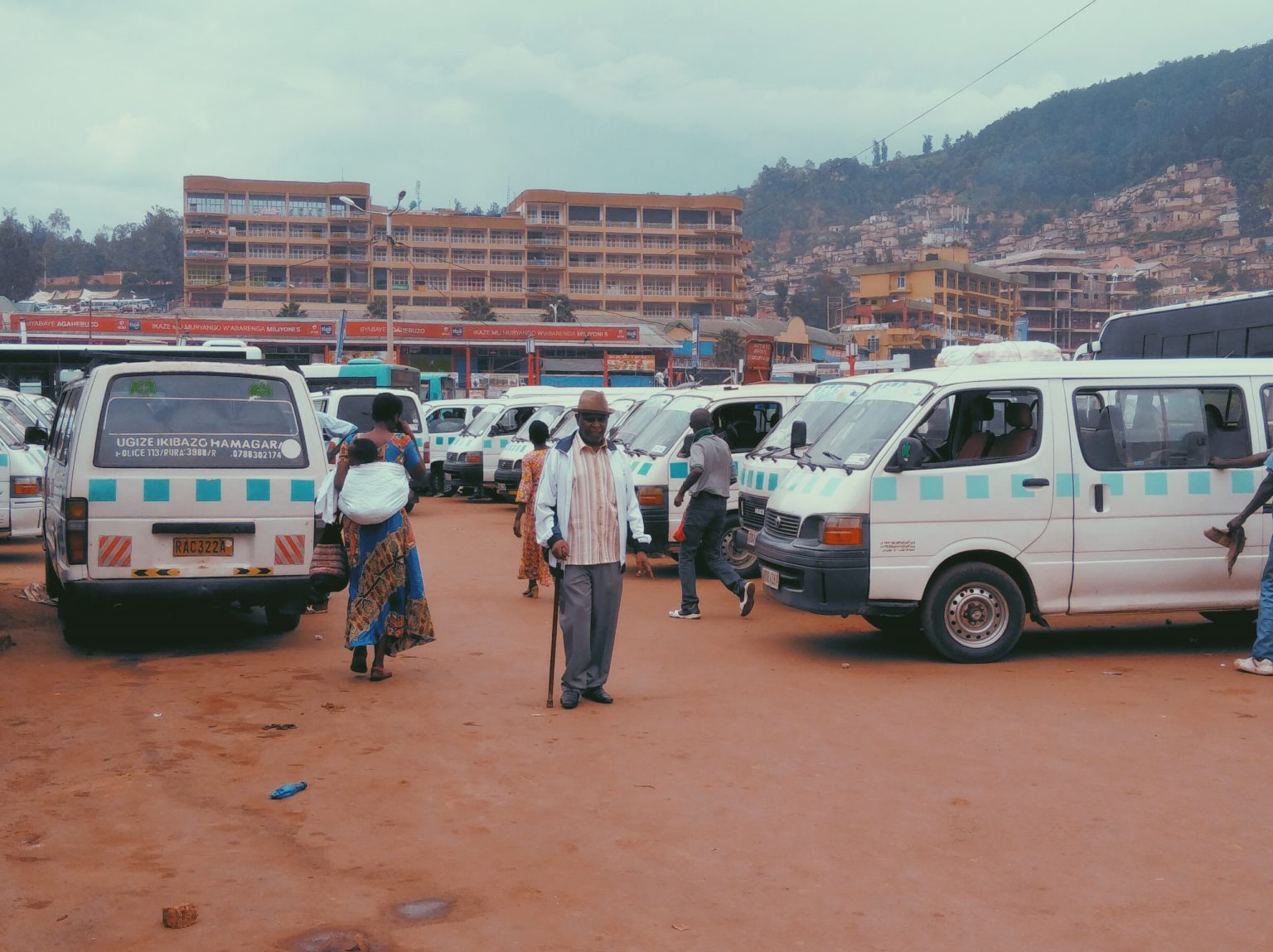 Minibus taxis providing intercity services at Nyabugogo Taxi Park.
Minibus taxis providing intercity services at Nyabugogo Taxi Park.
There are key and very important lessons to be drawn from this shift in the delivery of urban transport in the City of Kigali and could provide many lessons to most developing cities.
Firstly is the ability to solve the public transport payments challenge. What is observed in Kigali is a very rare implementation of a cashless payments system guided by a progressive regulatory framework. Urban transport in the city is 100% cashless providing greater revenue transparency and minimizing revenue leakages within the public transport industry. The payments infrastructure is provided by an independent service provider AC Group and regulated by the Rwanda Utilities Regulatory Authority. The service provider has a distribution of agents spread across the bus network providing recharge and top-up facilities for public transport users.
 Public transport passengers loading their NFC cards before boarding public transport
Public transport passengers loading their NFC cards before boarding public transport
The meter taxis in the city are also required to provide cashless fare collection systems. Each registered taxi is required to have a meter installed. This meter will record trip information such as distance traveled and trip fare as well as provide in transit trip information such as estimated arrival time (ETA). Fare payment is done either by cash or mobile money. This technology is provided by YegoCab with support from the regularity authority. The uptake of this technology has faced several challenges besides repeated regulatory pronouncements enforcing the use of the system. Navigation platforms do not have up-to-date information especially in remote parts of the city, in addition, the drivers often experience difficulty in reading GPS navigation systems preferring rather use their local understanding to navigate the city. These lessons are important for both private and public sector players in other developing cities looking to implement similar technologies.
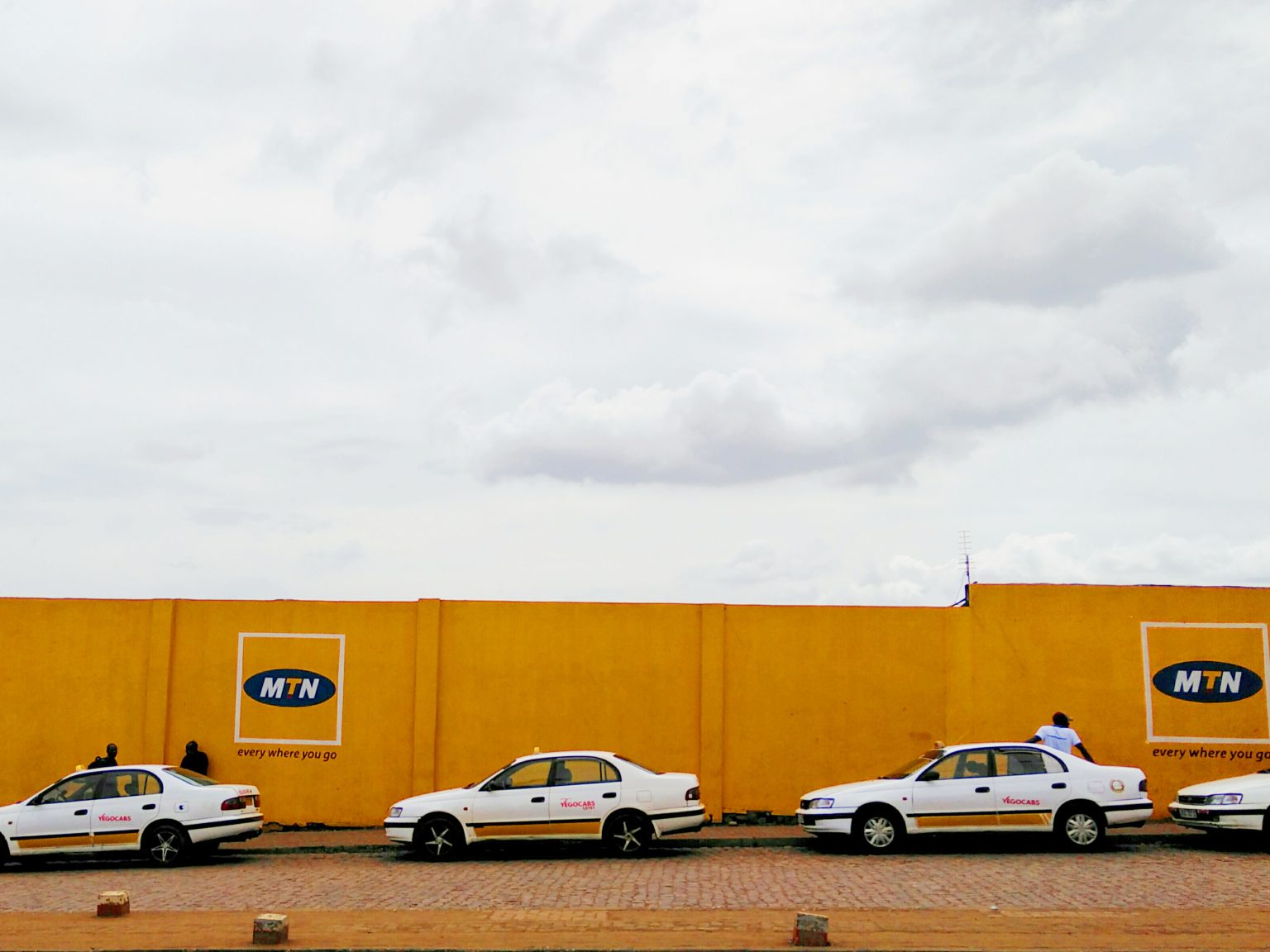 Meter taxis with YegoCab logos waiting for passengers at Remera Taxi Park
Meter taxis with YegoCab logos waiting for passengers at Remera Taxi Park
The enforcement of a public transport level of services has ensured that operators adhere to specific headways as outlined by the contracts. This has not been as successful because most of the public transport vehicles get caught in vehicle traffic consequently impacting schedule adherence and passenger waiting time, especially in the peak periods. Operators do however try to adhere to the schedule and the regulatory authority often conducts regular inspections to enforce schedule adherence. So despite the underlying traffic challenges that impact schedule adherence, both the operators and regulators are continuously driven and monitored towards providing a reliable service with reasonable waiting times. This implies that even with significant strides towards organizing public transport, there are limitations if cities do not account for the traffic management interventions that support desired service level requirements to deliver shorter waiting times.
 Long waiting times during peak periods. A key challenge of the first-generation system
Long waiting times during peak periods. A key challenge of the first-generation system
In delivering a new public transport system, the perennial problem of small occupancy vehicles providing city-wide transport services is averted by enforcing a minimum vehicle occupancy for all vehicles that provide services in the public transport network. All 15 seater vehicles were removed from the network and more efficient higher occupancy vehicles were required to provide services. The popularity of 5 seaters and 15 seater vehicles in providing public transport services in many developing cities are because of the low barriers to accessing these vehicles which are usually cheap second-hand imports. Higher occupancy vehicles are more expensive and not profitable in an informal and deregulated environment. Only high occupancy vehicles with capacity ranging from 29 – 75 passengers are permitted to provide public transport services. This was among the specifications in the contract.
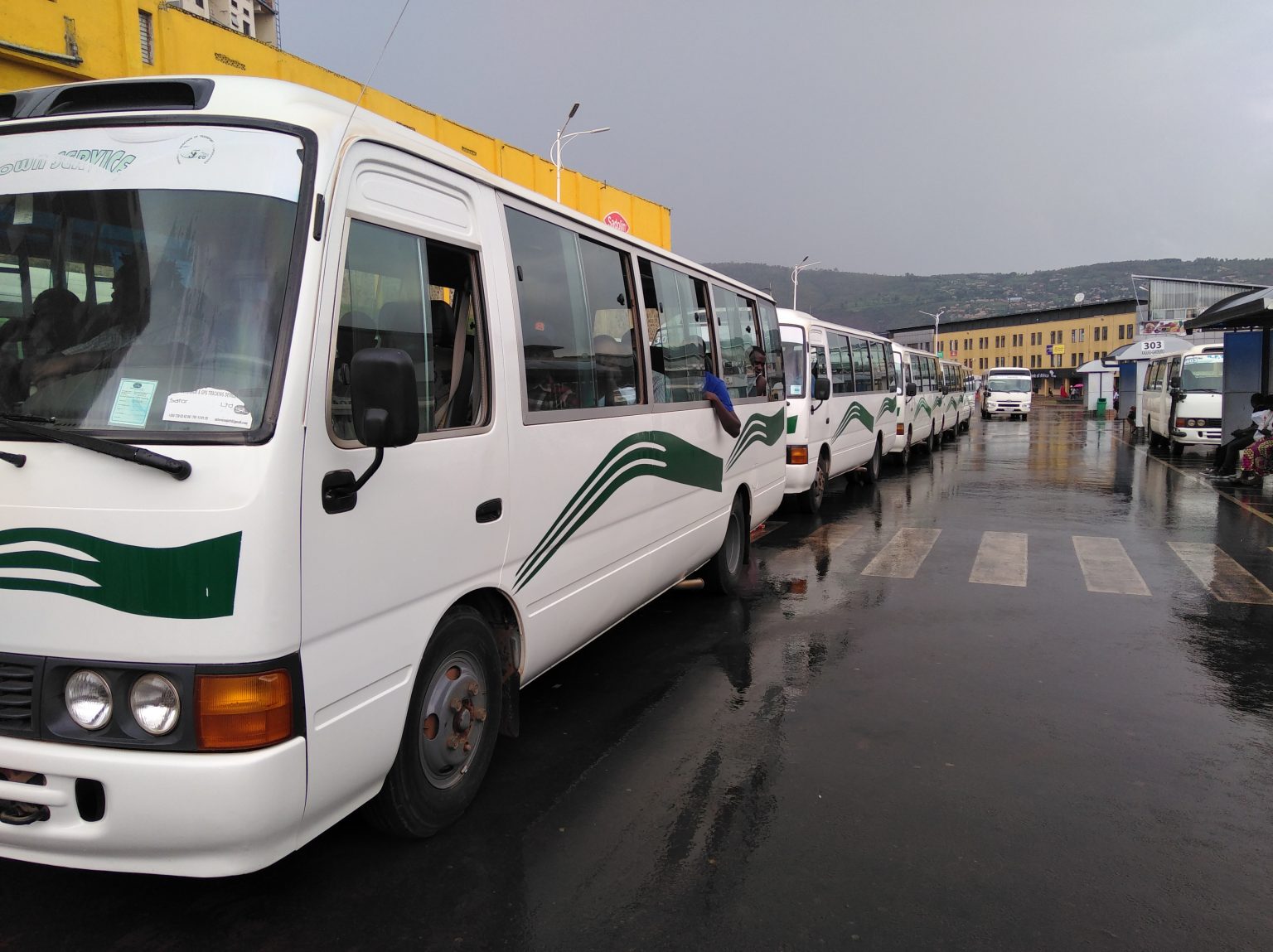 RFTC buses parked at the CBD Taxi Park
RFTC buses parked at the CBD Taxi Park 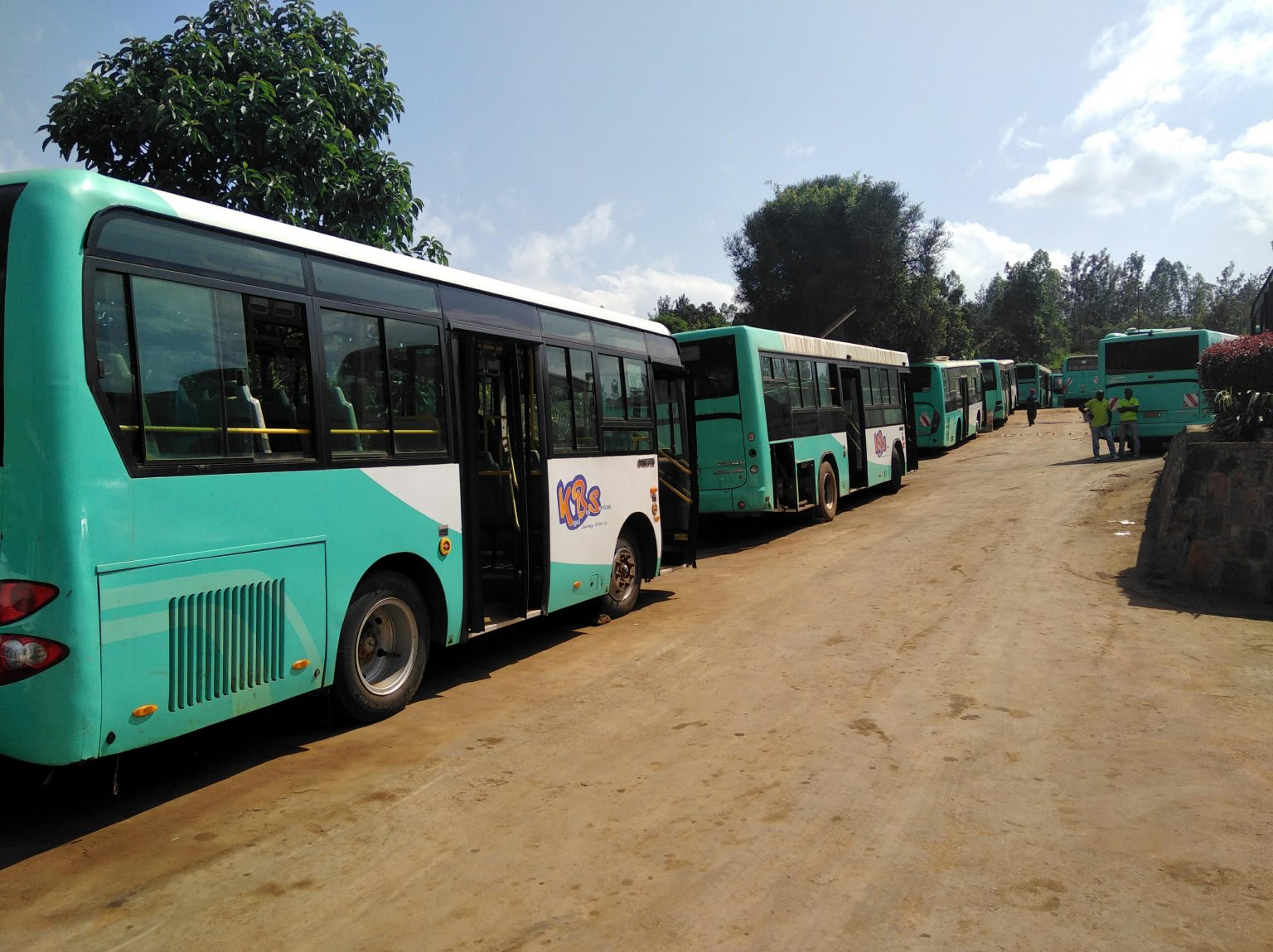 Kigali Bus Service (KBS) buses at the maintenance and repair facilities in Kabuga
Kigali Bus Service (KBS) buses at the maintenance and repair facilities in Kabuga
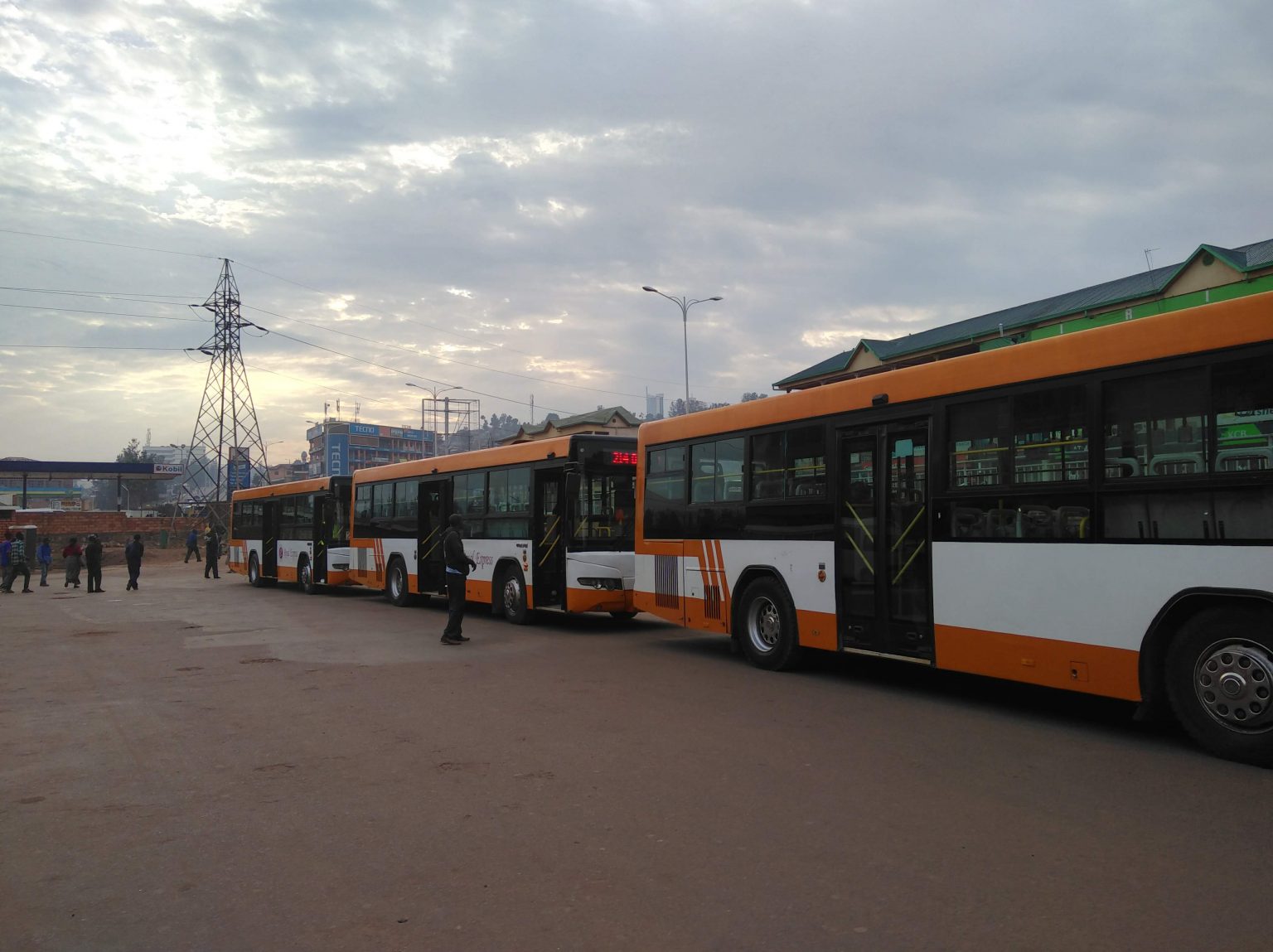 Royal Express buses parked at Nyabugogo Taxi Park
Royal Express buses parked at Nyabugogo Taxi Park
Despite significant progress with managing informality. The two-wheeler moto-taxi continues to be a key feature in Kigali’s urban transport system. The most obvious regulatory response was to ban moto-taxi from the face of the city, but the terrain of the city and the quality of infrastructure in the remote parts of the city has made authorities rethink their stance on this particular mode of transport. It remains a key mode of transport for thousands of residents in the city. The regulatory environment has achieved an important feat in comparison to most cities that depend on two-wheeler moto-taxi. Riders are required to have helmets for both the driver and passenger. Failure to adhere to this comes with severe penalties including arrest and loss of operating license. In addition, moto-taxi drivers are allocated into zones spread out across the city and are required to operate in these areas that are displayed on their reflective vests which they are required to put on at all times. This makes it easy for enforcement as well as distinguishing between private moto-taxis and public transport moto-taxis. In addition technology providers have also partnered with moto-taxi drivers to provide tech-driven services using mobile technologies. Key players in the moto-taxi market include Pascal Technologies and YegoMoto who are providing e-hailing and payment services for moto-taxi operations. These services come with multiple revenue collection options including cashless and mobile money payments. All these measures are a significant leap forward in improving the service delivery and regulation of moto-taxis in a city where residents heavily depend on them to access opportunities.
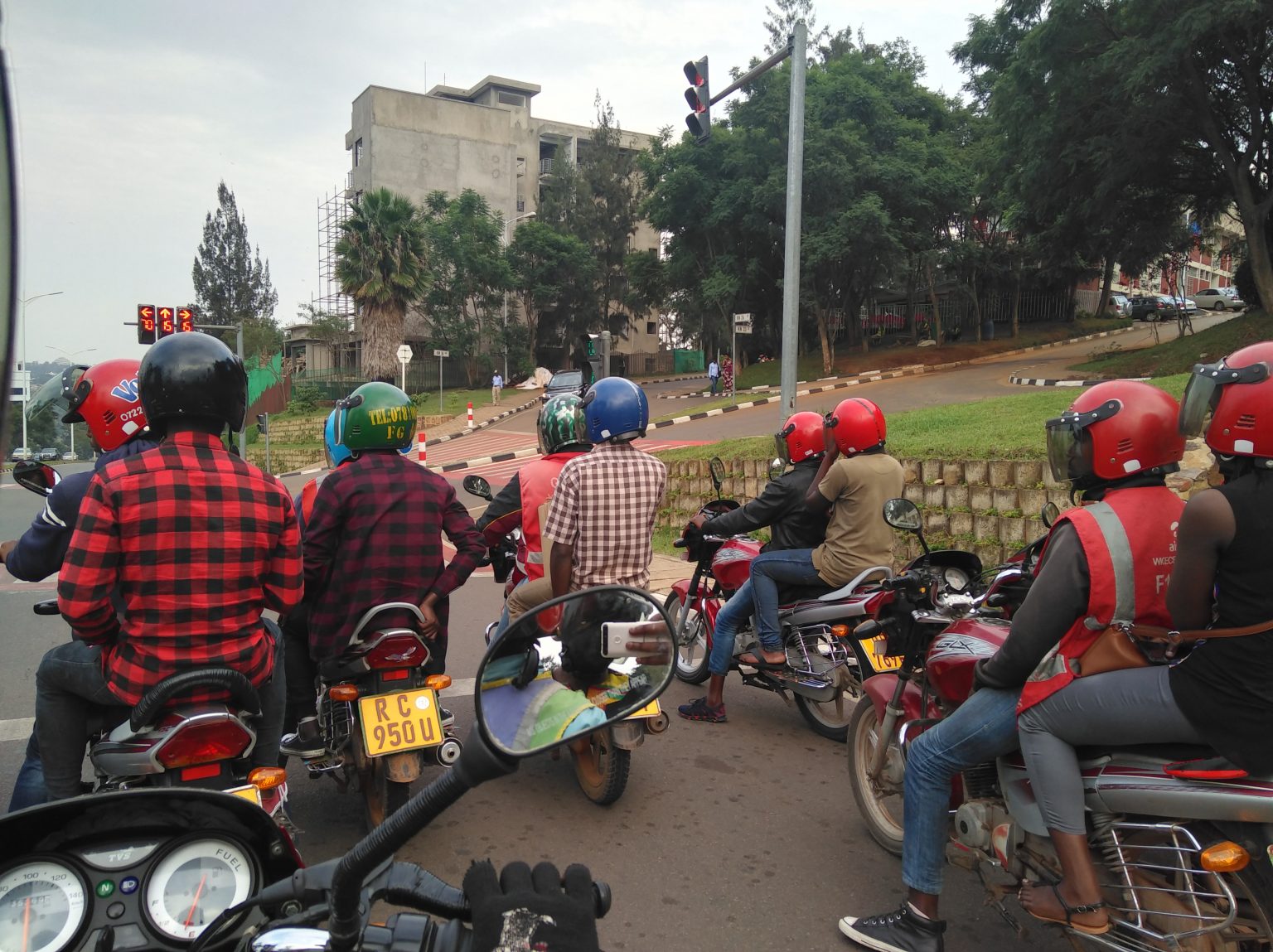
Moto taxi along KN5 waiting for the green light at a traffic signal
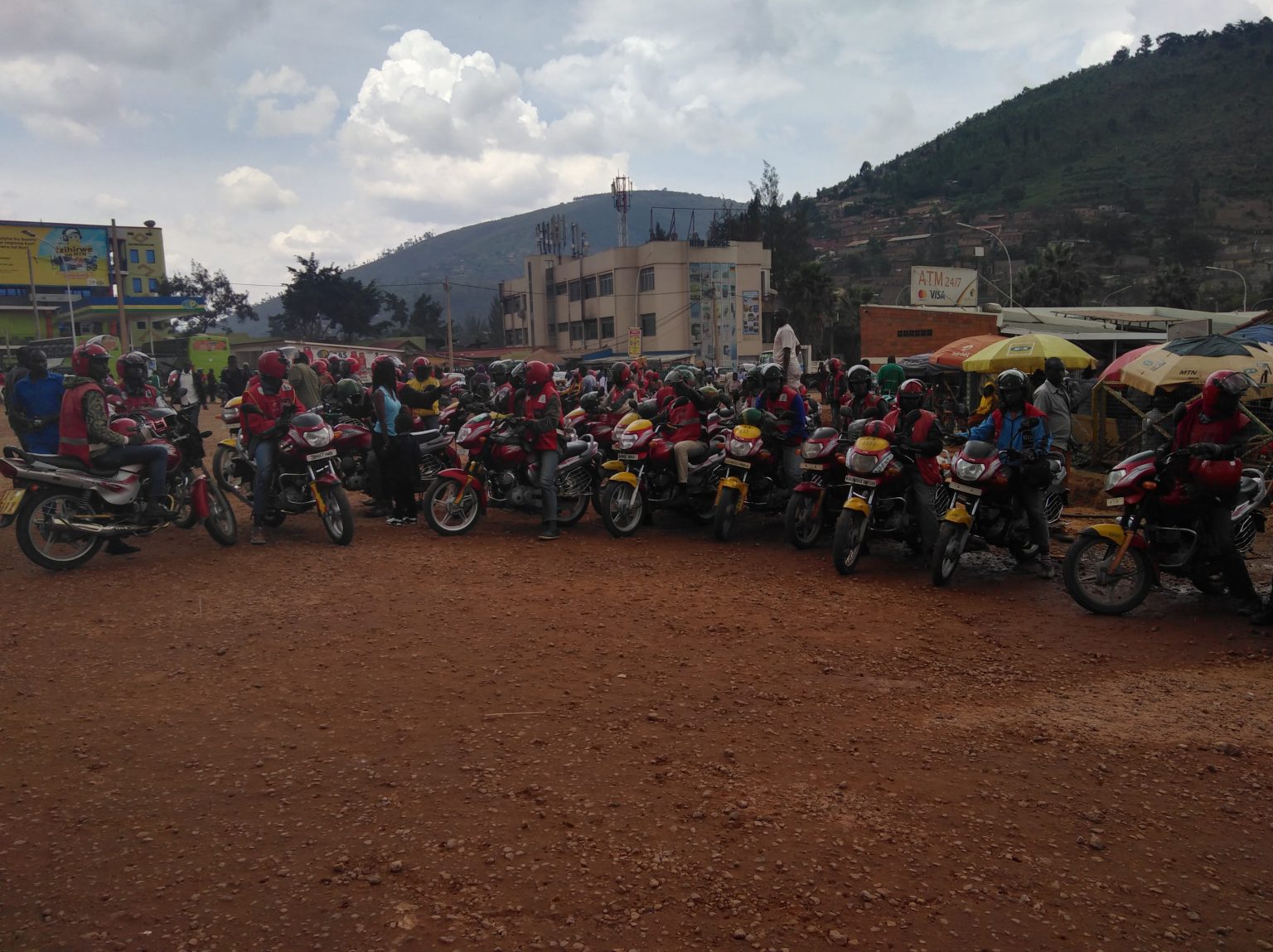 Moto taxi operators at Nyabugogo Taxi Park
Moto taxi operators at Nyabugogo Taxi Park
A key public transport mode for most low-income earners is bicycle taxis. These in addition to the moto-taxi provide significant employment opportunities to many youths in the city. With the moto-taxi requiring much higher purchasing capital as compared to bicycles. Bicycle taxis have become an easy source of employment for Kigali’s growing youth population. Besides the low barriers to entry, RURA the regulatory authority fortunately does not tax this sector despite previous efforts to ban them from operating. The cause for the ban was largely attributed to safety concerns as there is no dedicated Non-Motorised Transport infrastructure in much of the city’s road network. This resulted in a significant number of accidents involving motorized modes and bicycle taxis. Bicycle taxis also provide a very affordable solution of moving light freight around the city primarily for the market traders, milk and water vendors. Far from providing public transport and cargo services bicycle taxis have been a talent pool for professional cycling. Many young people that provide these services have dreams and aspirations to one day represent their country at the coveted Tour De Rwanda.
 Bicycle taxi with a passenger in the outskirts of Kigali
Bicycle taxi with a passenger in the outskirts of Kigali
 Bicycle Taxi at Kimironko Taxi Park
Bicycle Taxi at Kimironko Taxi Park
 Bicycle taxi freight services
Bicycle taxi freight services
Overall one can see that an overarching progressive regulatory environment and well-supported and cooperative private sector have been instrumental to the success of urban transport interventions in the City of Kigali. The first generation even with its current challenges has significantly played a key role in organizing public transport delivery setting the scene for further improvements based on existing wins.
Development Philosophy: Doing more with less
I am fascinated by the underlying philosophy driving government policy and action and how that is resonating with Rwandan youth. Doing more with less. I digress on this philosophy with my experience of the city’s shape and character. Young Rwandans are unapologetic about their appetite to be number one on the continent. In a region with Nairobi, Dar Es Salaam, and Kampala as bigger cities, Kigali’s aspirations which also reflect that of the country is to be the first to deliver a fully operational modern public transport system in East Africa. It doesn’t help that Tanzania has already implemented a BRT line in Dar Es Salaam with Nairobi actively engaging in delivering one. The battle is on, and driving it amongst the youth is the philosophy of doing more with less. This is what is energizing reforms being witnessed in other sectors such as education, health, social services, and women and youth empowerment.
With the development of the 2nd generation public transport system underway, the transformation of urban transport in Kigali unearths alternative trajectories for developing visions and new futures for urban transport in developing cities. Like any other city, Kigali presents multiple textures of an evolving urban mobility system reflecting the cultural, social, and economic aspirations of Rwandan people and their desire to share their experiences with people from the rest of the world. Daring to invent the future by doing more with less.
.jpg) Mechanics attend to KBS fleet of buses at the facilities in Kabuga, Kigali
Mechanics attend to KBS fleet of buses at the facilities in Kabuga, Kigali 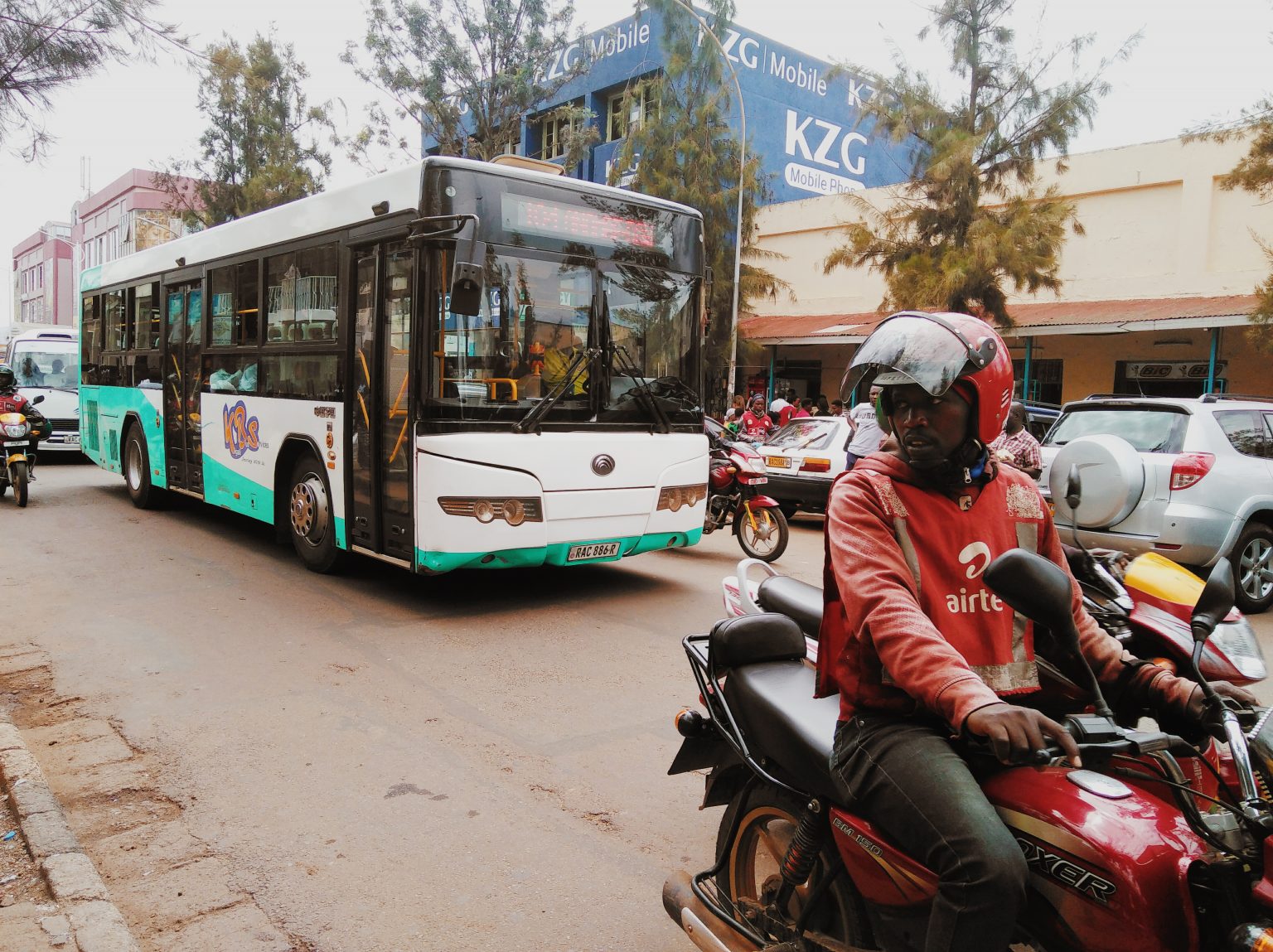 KBS bus and moto-taxi driver in the City of Kigali downtown
KBS bus and moto-taxi driver in the City of Kigali downtown